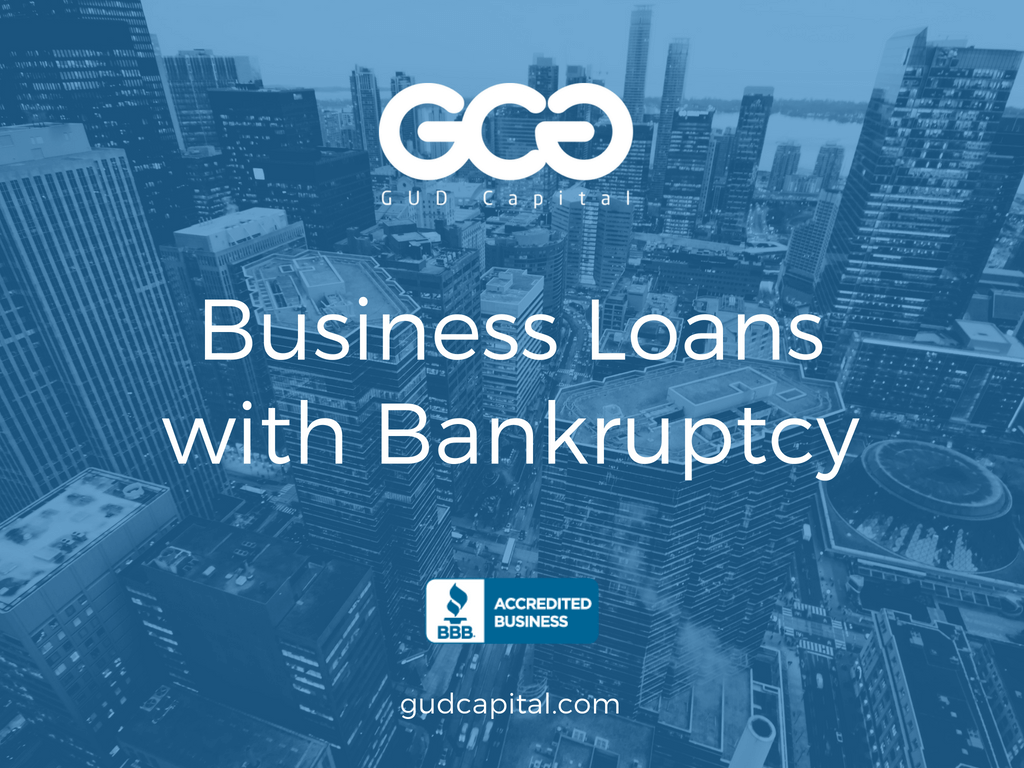Business Bankruptcy Funding
Bankruptcy can be a complex, confusing, and unpleasant process for people to go through. Therefore, it is vital to know important factors about the process, your options, and the current trends contributing to businesses and individuals turning to file for bankruptcy, as well as the business funding options available to business owners with open or past bankruptcies.
Quick-jump to the following sections:
- Asset Based Financing
- Accounts Receivable Financing
- Factoring
- Merchant Cash Advance
- ACH Cash Advance
Presently, there has been a trend of older Americans having to file for bankruptcy—shattering their traditional ideas about life in retirement. Things like vanishing pensions, inadequate savings, and soaring medical expenses are all signs of dilemma that have been building for years. Current research has helped us to shed light on why this is happening. That being, people 65 and older are filing for bankruptcy at a rate three times what it was in 1991; plus, declining incomes before retirement aggregating the current trend. The study further suggested how older people are often less able to push through the hard times, and the fact that its hard enough for an older person to find and keep one job. Moreover, bankruptcy can offer a fresh start for people who need one, but for older Americans, the study found it could be seen as a little too late. When they finally do file, their wealth is almost gone, and they don’t have many years ahead to get back on their feet. Thus for older individuals, there is a long-running effort lead by Professor Thorne at Idaho University, going by the bankruptcy project. Professor Thorne and other colleges have come up with questionnaires to ask bankruptcy filers to gain insight into why their age group is filing more than others.
Another occurrence happening is chapter 11 bankruptcies increasing up to 63% from a year ago. Meaning, corporate bankruptcies are now at the highest level since April 2011, and there were close to 800 chapter 11 bankruptcies filed in the US in March. Companies lean towards Chapter 11, as it protects them from creditors to try to restructure its debts under the supervision of a judge. Typically results in a considerable reduction in debt and the transfers of part of all of the ownership of the company from pre-bankruptcy owners to creditors. Going by this process, owners hope to emerge from bankruptcy with less debt and keep operating their businesses.
Another new factor that may affect bankruptcy filings are the new United States tax laws that were signed earlier this year. It may also affect consumers as well as businesses. With the new laws, consumers are growing hesitant to file bankruptcy under chapter 7 or chapter 13 bankruptcy if they are above medium income earners who need to pass the means test to qualify for bankruptcy or who may seek lower plan payments in chapter 13 bankruptcy. So the way that the means test works is that it determined how much disposable income a person has to pay their creditors. If the number is zero, then there is a good chance they could qualify for chapter 7 bankruptcy, and if higher the person would have to file chapter 13. So with the new laws, the significant changes remain to be that your income may put you in a different tax bracket, and a considerable amount of Americans taxpayers will benefit from lower tax rates. Furthermore, the standard deduction goes up and the personal exemption goes away, and taxes on businesses owners have changed to name a few modifications to the law that should be taken into consideration when filing for bankruptcy.
Lastly, there is also a trend in the type of businesses that are filing for bankruptcy within the last few years. Two sectors, in particular, have been retail and energy. Shopping centers and anchor stores shut down at a record pace, which wasn’t a shock to most credit managers worldwide, but the following sectors struggle caught many by surprise. The energy market has changed drastically causing many oil companies to struggle with keeping up with the altered landscape although energy prices have begun to stabilize. In 2017 alone, ten energy-related names filed for bankruptcy and that the top five that did, accounted for a staggering $11.2 billion in liabilities. As far as retail, stores like Toys “R” Us, True Religion, Payless ShoeSource, RadioShack, and many others have also been forced to file. Hence what can be taken away from one of the most recognizable names on the bankruptcy list, Toys “R” Us, is the rise of global eCommerce. Their company in particulars downward spiral is also because of the significant role trade creditors played as they started restricting credit and as a result, caused a serious liquidity issue within the organization. Therefore, as what can be understood from this article is that there are many factors to why an individual or company may have to file for bankruptcy and the options or restrictions that may come with it.

Types of Bankruptcy Business Loans
When your business files for bankruptcy, you will automatically lose the ability to obtain conventional bank or SBA financing — but that doesn’t mean that all of your options are gone. There are numerous funding options for small businesses that have filed for bankruptcy, but most of them can be fairly-expensive. Below we’ll take a look at some of the financing options available to small businesses in need of financing after filing for bankruptcy.
Asset Based Financing
Financing companies see business owners and businesses in bankruptcy as very high-risk. To help reduce the lender’s exposure, they may look to use a business’s assets as collateral for funding. There are many types of asset-based financing, including using accounts receivable, commercial real estate or hard assets collateral.
| Factor rates | 8-25% |
|---|---|
| Terms | 1-3 years |
| Funding Amounts | $5,000-$2,000,000 |
| Collateral | Required |
| Fees | Low to High costs |
Accounts Receivable Financing
Accounts receivable financing is a good option for a business that is in bankruptcy or had recently been in bankruptcy. A/R financing is a type of asset-based financing that uses a company’s accounts receivable as collateral for a line of credit that the business can use to help with cash-flow and operations.
| Rates | 0.5-2.5% |
|---|---|
| Terms | 1-3 years |
| Funding Amounts | $250,000-$10,000,000 |
| Collateral | Required |
| Fees | Medium costs |
Factoring
Factoring receivables is another type of asset-based financing that is similar to an accounts receivable line of credit. With a factoring line, instead of the A/R being used as collateral, the accounts receivable is sold to a factoring company, and the funder then forwards the majority of the invoice’s value to you, minus a fee, and then releases the remaining amount once the invoice is paid.
| Rates | 0.5-2.5% |
|---|---|
| Terms | 1-10 years |
| Funding Amounts | $10,000-$5,000,000 |
| Collateral | Required |
| Fees | Medium costs |
Merchant Cash Advance
This type of cash-flow financing is based more on a company’s merchant credit card sale revenues; therefore, a merchant cash advance is a viable option for a small business that is in bankruptcy or has completed bankruptcy. A cash advance isn’t a loan but is the sale of future business receivables at a discount to a funding company. After the funding company provides the cash advance to the small business, the funding company collects repayment by splitting each day’s credit card sales with the merchant.
| Factor rates | 1.10 – 1.50 |
|---|---|
| Terms | 3-21 months |
| Funding Amounts | $5,000-$2,000,000 |
| Collateral | Not required |
| Fees | Low to High costs |
ACH Cash Advance
This high-risk cash-flow financing is almost identical to a merchant cash advance, in that they are both the sale of future receivables and have very similar rates and general terms. The difference between an ACH loan and an MCA advance is the way the funding is repaid. As mentioned above, a merchant cash advance is repaid by splitting credit card sales, whereas an ACH advance is repaid by having a set amount sent to the funder from the merchant’s bank account using Automated Clearing House.
| Factor rates | 1.10 – 1.50 |
|---|---|
| Terms | 3-24 months |
| Funding Amounts | $2,500-$2,000,000 |
| Collateral | Not required |
| Fees | Low to High costs |
Summary
Its without a doubt that business owners who have recently been in bankruptcy face fewer financing options than those who haven’t filed bankruptcy. But as you see above there are options available — even for businesses with open bankruptcies. The key is to make sure you understand your options, and connect with the right lender that will provide you the most affordable financing. If you are a business owner in need of financing who is currently in bankruptcy or have filed for bankruptcy within recent years, please reach-out to one of our funding specialists, and we’ll help you navigate the process.





















